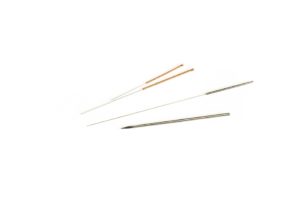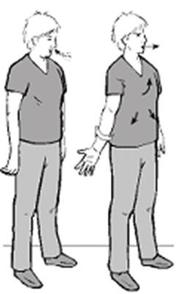A pinched nerve, sciatica, carpal tunnel, nerve stinger, and herniated disc are all descriptions of a serious nerve condition that affects thousands of people each year. This painful condition is often described as a tingling and burning sensation that radiates down the nerve of an extremity to the hands or feet. Nerves are important tissues that communicate signals back and forth from the central nervous system to the extremities. When any pressure is placed on them, the important signals they carry are affected and pain often follows.
A true pinched nerve frequently travels from the spine, beyond the elbow and knee, to the hands or feet. This pain often feels like an electric shock, burning, or numbing sensation. In cases like Piriformis Syndrome, a muscle can impact a nerve. Scar tissue can entrap a nerve in carpal tunnel syndrome, and many nerves can become irritated and compressed by a disc bulge.
A disc bulge occurs when the nucleus pulposus of the intervertebral disc migrates into the outer fibers of the disc, causing a bulge in the overall shape of the disc. If the nucleus escapes the outer fibers of the disc it is labeled a herniated disc. Either of these can put pressure on the nerve creating compression, pain, and nerve dysfunction.
What causes a disc bulge?
A disc bulge is usually a condition created by a specific lifestyle. Behavior patterns that include too many bending activities through the cervical or lumbar spine are often the causative factors creating a disc bulge. Bending or flexion of these areas of the spine adds pressure on the disc and the nucleus, pushing the nucleus to the outer edges of the disc. Eventually, the repetitive flexion is one too many, and the disc bulges placing pressure on the nerve. Repetitive bending, lifting with bad form, sit-ups, prolonged sitting, poor posture in front of the computer, and texting on the phone are all behaviors that can flex the cervical and lumbar spines and create disc bulges.
How is a disc bulge treated?
After a disc bulge has been diagnosed, quick and effective treatment is highly encouraged. The longer the nerve is compressed, the more damage occurs; some damage can even be permanent. The first treatment of the disc bulge is to reduce compression and inflammation. The chiropractic adjustment is a perfect tool to reduce the compression of the nerve by improving the biomechanics of the movement segments around the disc bulge. The adjustment helps to alleviate the compression of the disc by improving the motion of the fixated segment.

Acupuncture is another great tool to utilize since it effectivelyreduces pain and inflammation. Acupuncture improves blood flow around the irritated nerve root, sweeping inflammation and swelling away from the nerve. Acupuncture can also help to reduce the brain’s sensitivity to the pain by blocking the signals the irritated nerve is sending to the brain. Reduction of the compression and inflammation of the nerve root can take anywhere from one to eight weeks.
How to prevent a disc bulge?
After the pain from the disc bulge subsides, prevention of the next episode is necessary. Recurrence of a disc bulge is very common and therapeutic exercise is very important to prevent this. Repetitive flexion is often the cause of a disc bulge, so exercises that prevent flexion are important for preventing the next injury. Strengthening of the core musculature and training the brain to keep the spine in neutral posture is the most effective way of preventing the next disc bulge. Look at our video on “Improving Your Abdominal Endurance” for exercises intended to reduce the damage from repetitive flexion.
Likewise, reducing the number of times that you flex in a day can be helpful to reduce the next disc bulge. Try a standing desk as opposed to sitting at your standard desk all day. Practice squatting by holding onto a doorway. This will reduce poor squat form in your daily home activities. Instead of sit-ups, try a side plank or push-ups. They both improve core stability without flexing the spine. Don’t forget to take frequent breaks during the day when sitting at your computer or when texting on your phone. This alleviates the flexion stress on the spine and reduces the pressure placed on the disc.
This Bruegger’s postural exercise is the best. Perform it for 30 seconds twice each hour. Simply stand and turn out your hands fully while taking a deep breath in your nose and out your mouth.
Disc bulges do not have to be a life altering condition. They can be both fixed and prevented by following these simple steps. The most important step is to tell your chiropractor. In the hands of competent chiropractic physician, a disc bulge can be like other injuries that can be fixed quickly and prevented from reoccurring.
For more information, recipes, and excercises, like us on Facebook, call us at 540-344-1055, or stop by our Roanoke, Virginia chiropractic office.

Daryl C. Rich, D.C., C.S.C.S.






